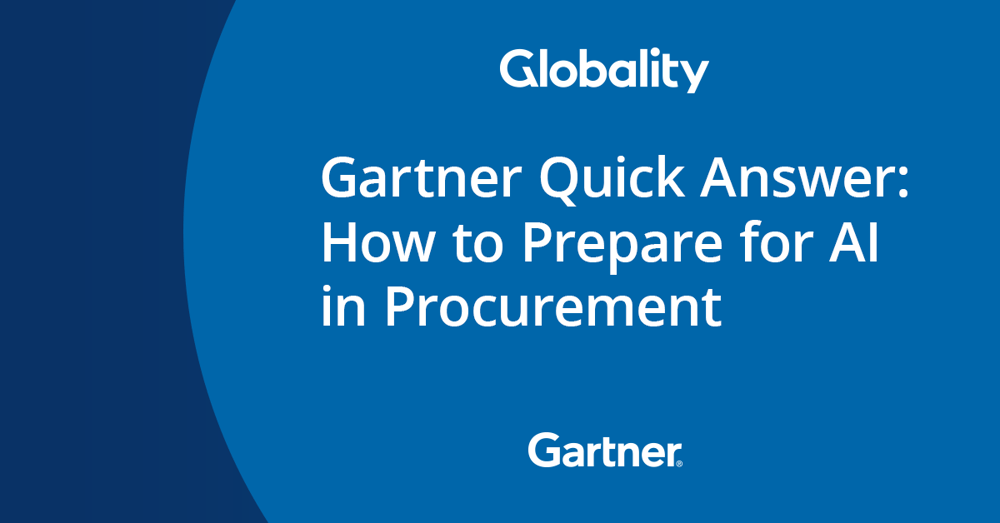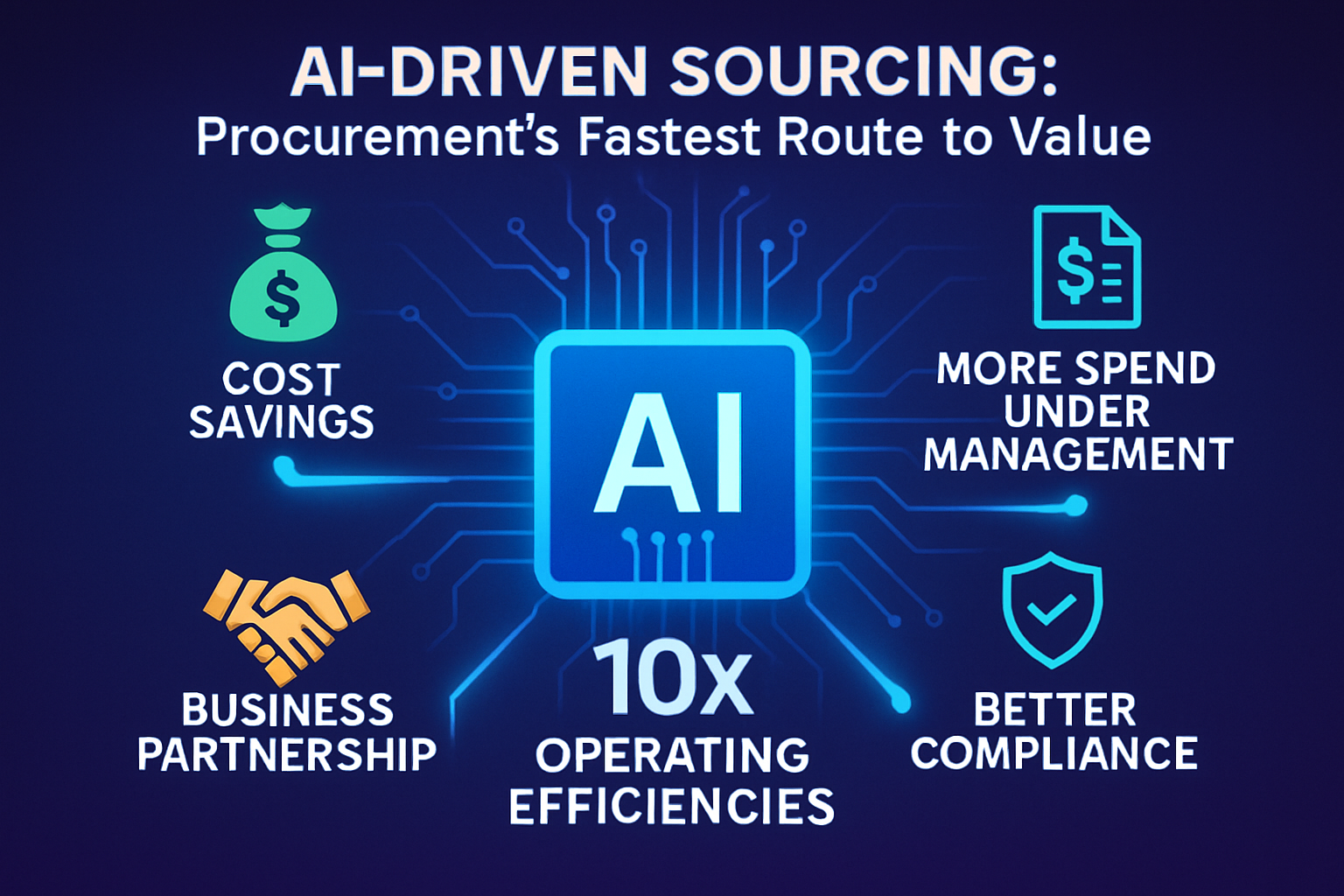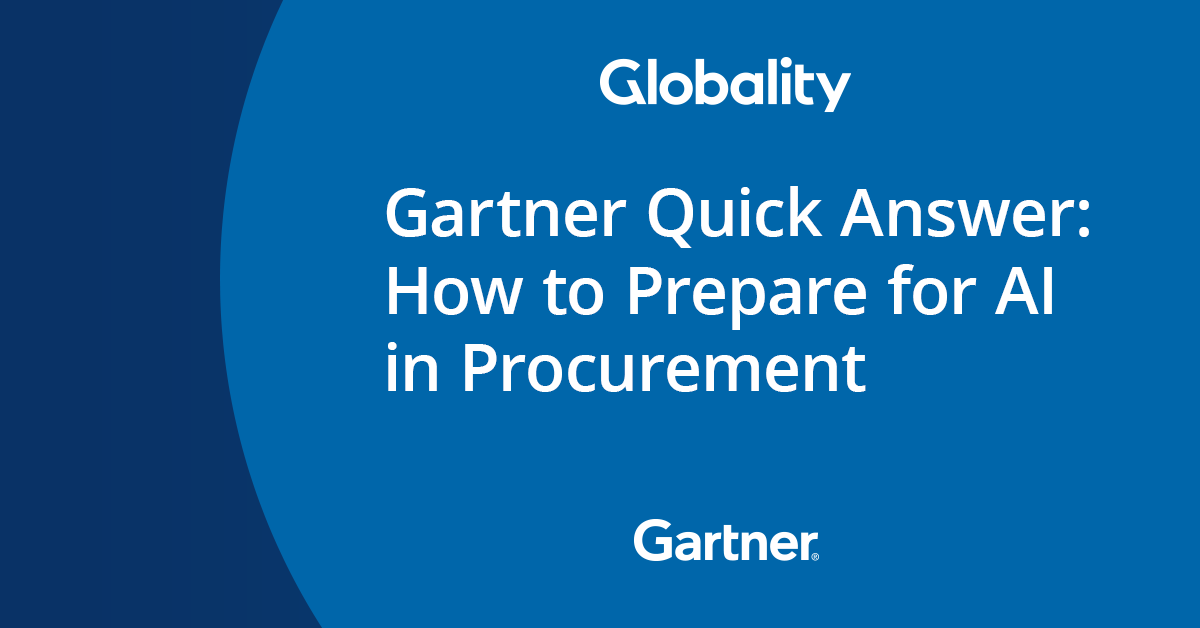Four Ways to Prepare for AI in Procurement

Every business unit is looking for ways to adopt AI-driven technology to increase productivity and efficiencies while reducing costs and procurement is no exception.
The Gartner Quick Answer: How to Prepare for AI in Procurement highlights the four key steps that CPOs and other sourcing leaders should take to embrace and adopt AI-driven autonomous sourcing, enabling procurement to move from back-office function to a strategic growth driver and become a leader across the enterprise.
- Secure Leadership Support and Resources
One of the first steps in preparing for AI in procurement is to secure strong leadership support and the required resources. This involves:
- Educating Executives: Informing key stakeholders about the potential use cases and benefits of AI in procurement builds buy-in. Highlighting how AI drives cost savings, reduces supplier risks, and improves working capital creates a compelling narrative.
- Aligning with Organizational Goals: Ensure that AI initiatives are aligned with the organization’s broader AI strategy and roadmap. Prioritize tasks that demonstrate clear ROI.
- Securing Budget: Build a core team that includes cross-functional and technical members led by an AI champion.
- Map Processes and Identify Opportunities
To maximize the benefits of AI, companies need to comprehensively map their procurement processes and identify areas where AI can have the most impact:
- Process Mapping: Conduct a thorough mapping of outdated, manual procurement processes to identify repetitive pain points, bottlenecks, and data-intensive tasks that consume significant time and resources.
- Benchmarking KPIs: Establish benchmarks for key performance indicators (KPIs) such as cost reductions, cycle times, and compliance failure rates before AI implementation.
- Prioritizing Use Cases: Create a prioritized list of high-potential AI use cases for procurement, such as SOW creation, spend analytics, supplier discovery, contract lifecycle management, and risk analysis.
- Enhance Data Infrastructure and Quality
Quality data is the backbone of successful AI implementation. Companies need to enhance their data infrastructure and ensure the integrity and accessibility of their data:
- Data Inventory: Take stock of existing supplier master data, contract databases, and pricing data, evaluating their completeness and accuracy. This includes data from ERP systems, CRMs, supplier databases, and other repositories.
- Data Governance: Develop or adopt a schema for data cleansing, enrichment, labeling, and categorizing. Establish a robust data governance framework with specific access controls, security protocols, and compliance measures.
- Data Quality Assurance: Implement processes to ensure the reliability of data used for training AI models. This includes regular audits and updates to maintain high data quality.
- Select Suitable Solutions
Choosing the right AI technology solutions is crucial for effective AI adoption in procurement:
- Vendor Evaluation: Assess AI vendors and technologies that cater specifically to procurement needs, considering security protocols, integration capabilities, total cost of ownership, and vendor reputation.
- Solution Analysis: Analyze shortlisted AI solutions for their functionalities, compatibility with existing systems, and user reviews.
Click here to download the full Gartner Quick Answer: How to Prepare for AI in Procurement
And contact us for a demo of Globality’s autonomous sourcing platform – winner of Best Technology Provider at the World Procurement Awards – to see how it uses cutting-edge AI, built from the ground up, to deliver 70% efficiencies and 10-20% cost savings instantly.
Gartner, Quick Answer: How to Prepare for AI in Procurement 17 April 2024, By Naveen Mahendra
GARTNER is a registered trademark and service mark of Gartner, Inc. and/or its affiliates in the U.S. and internationally and is used herein with permission. All rights reserved.



